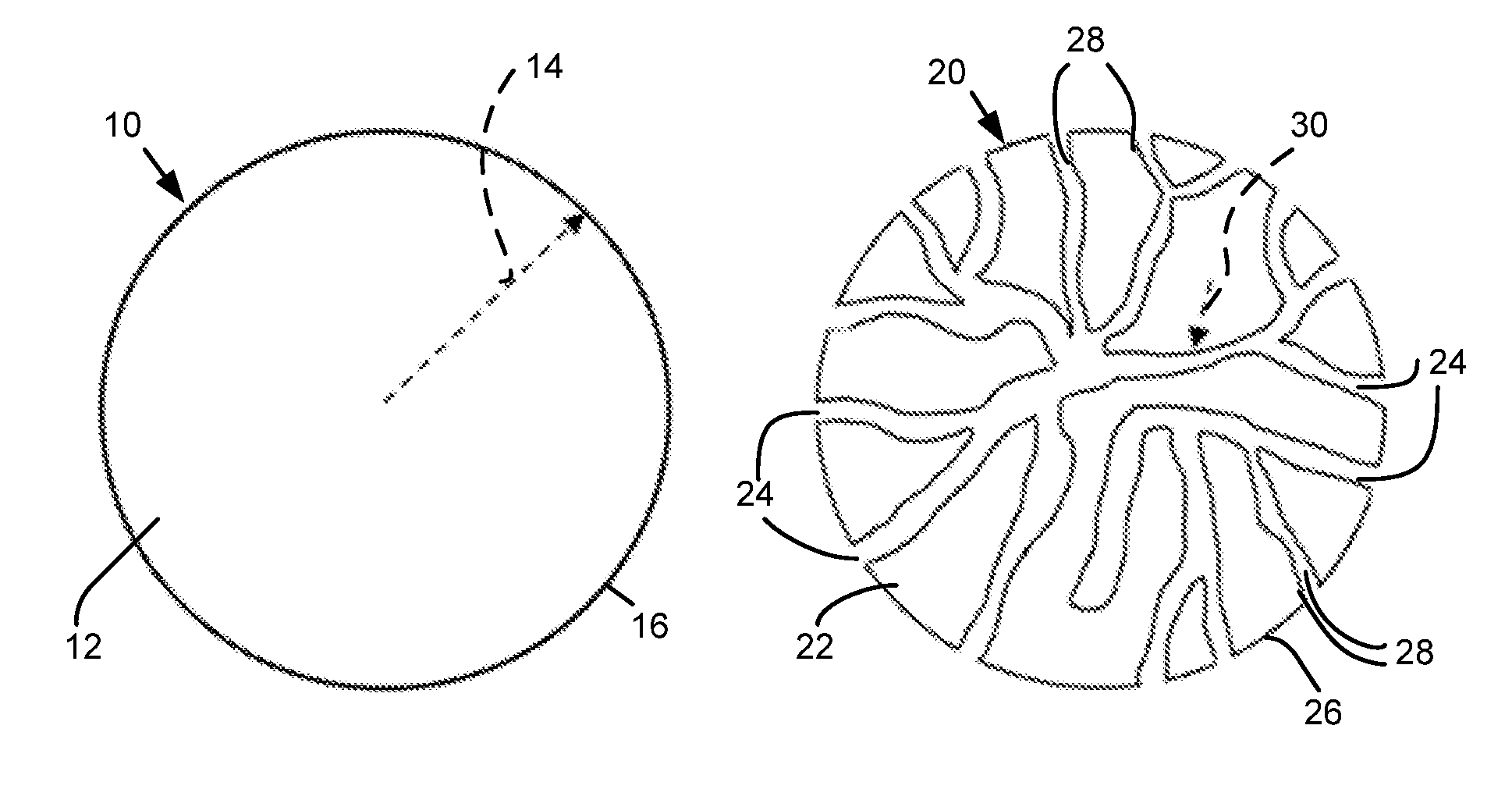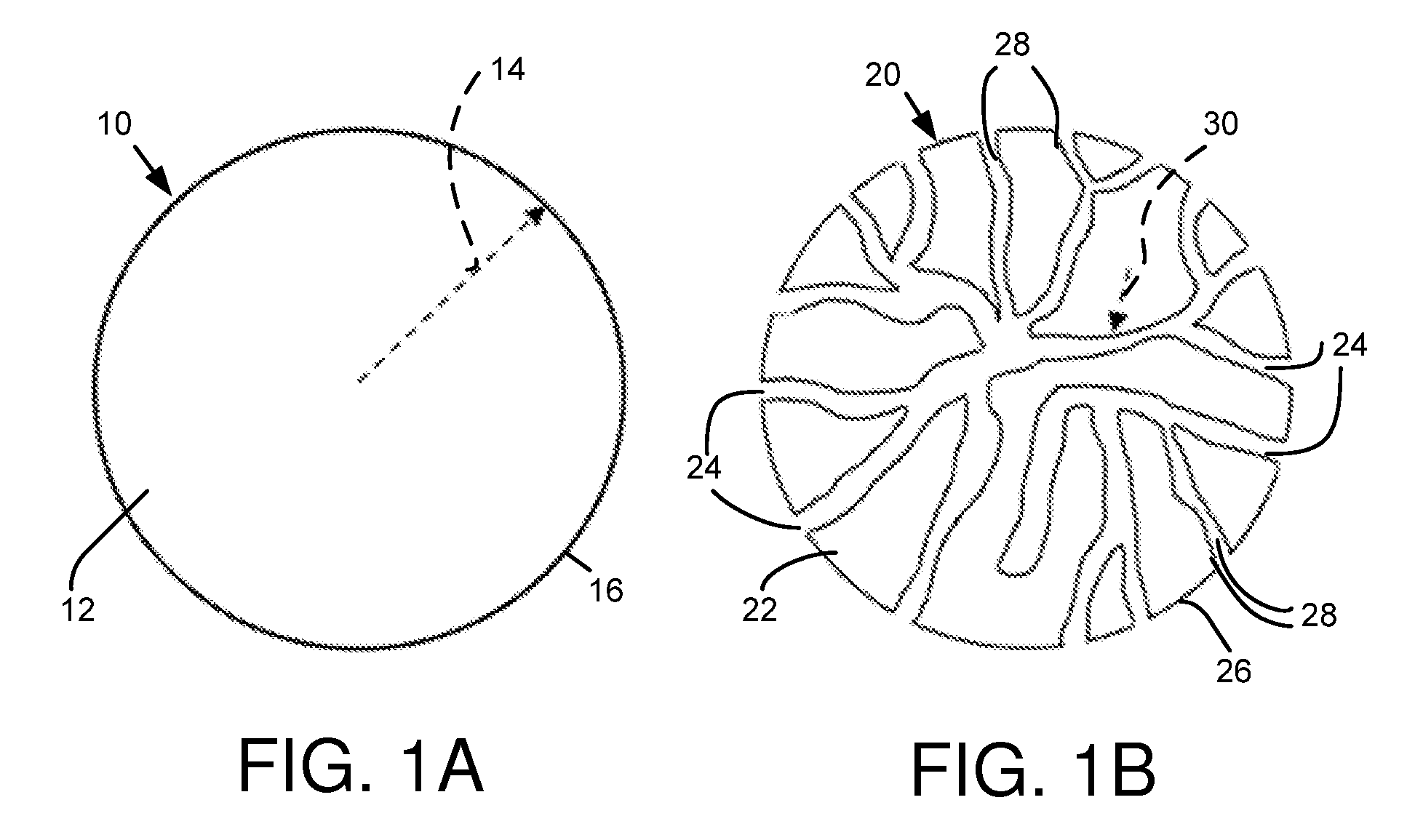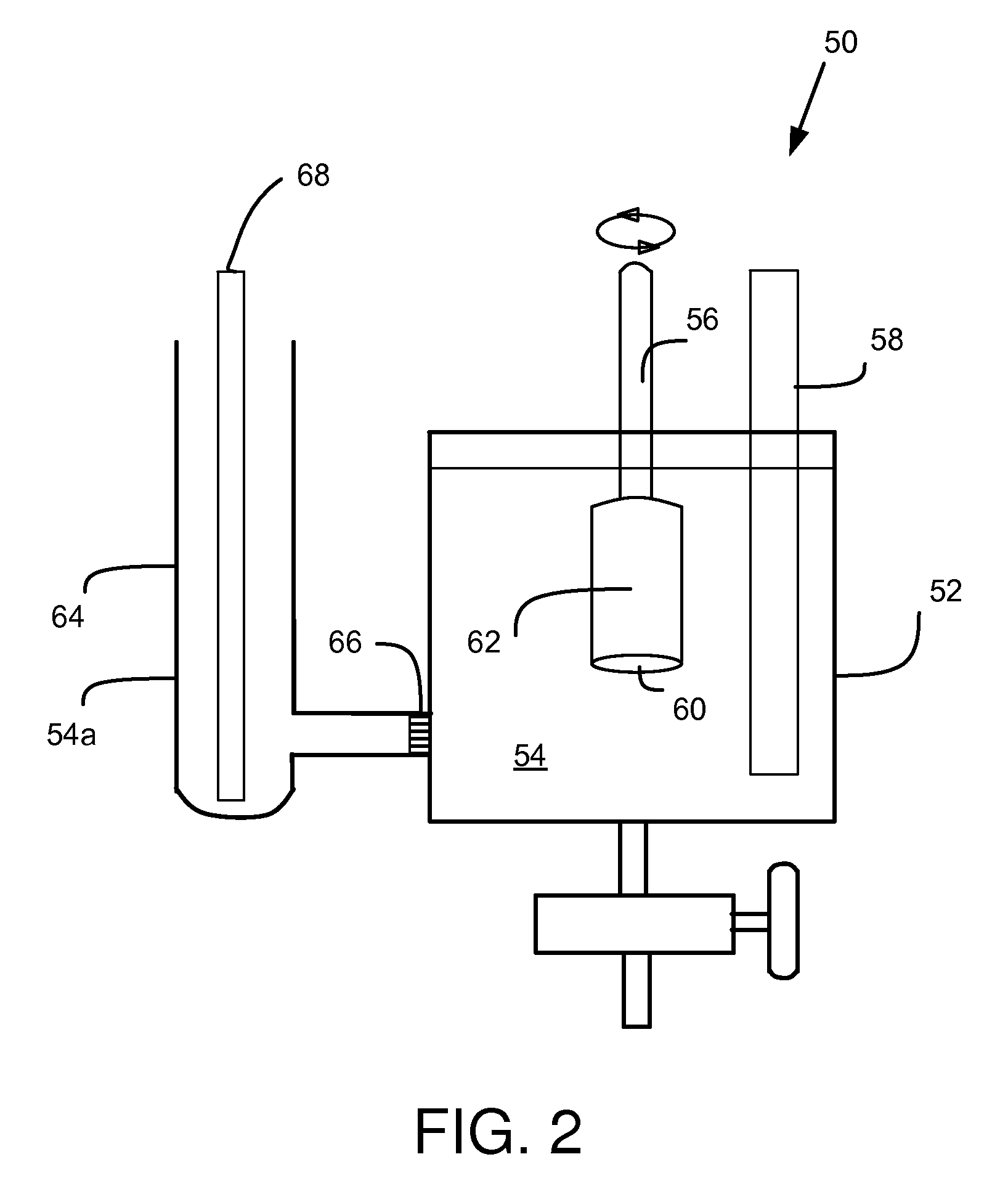Composite battery separator
a battery separator and composite material technology, applied in the direction of cell seperators/membranes/diaphragms/spacers, cell components, electrical equipment, etc., can solve the problems of increased sulfuric acid concentration, eventual failure, and increased resistance of batteries, so as to achieve the desired resistance to ionic flow, the effect of limited supply and difficult and costly production
- Summary
- Abstract
- Description
- Claims
- Application Information
AI Technical Summary
Benefits of technology
Problems solved by technology
Method used
Image
Examples
example 1
[0038]A leachate was prepared as described above using 5.0 grams of −200 mesh rubber powder, manufactured by Edge Rubber, Chambersburg, Pa., combined with 100 ml of pre-electrolyzed sulfuric acid with a specific gravity of 1.210. An Antimony Suppression Test was conducted as described above using 10 ml of the prepared leachate, and a Selectivity Ratio of 1.45 was calculated.
examples 2 and 3
[0039]Leachates were prepared as in Example 1 for rubber powder type Microdyne 75, manufactured by Lehigh Technologies, Tucker, Ga., and type Ecorr RNM 45, manufactured by Rubber Resources BV, Lommel, Belgium. Antimony Suppression Tests were run on these leachates, and selectivity ratios of 1.15 and 1.38 were calculated, respectively, for the two rubber powders, as shown in table 1 below.
PUM
| Property | Measurement | Unit |
|---|---|---|
| particle porosity | aaaaa | aaaaa |
| particle porosity | aaaaa | aaaaa |
| mass ratio | aaaaa | aaaaa |
Abstract
Description
Claims
Application Information
 Login to View More
Login to View More - R&D
- Intellectual Property
- Life Sciences
- Materials
- Tech Scout
- Unparalleled Data Quality
- Higher Quality Content
- 60% Fewer Hallucinations
Browse by: Latest US Patents, China's latest patents, Technical Efficacy Thesaurus, Application Domain, Technology Topic, Popular Technical Reports.
© 2025 PatSnap. All rights reserved.Legal|Privacy policy|Modern Slavery Act Transparency Statement|Sitemap|About US| Contact US: help@patsnap.com



